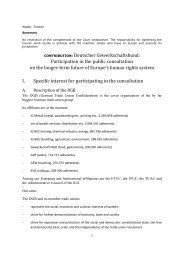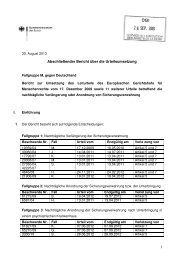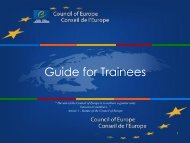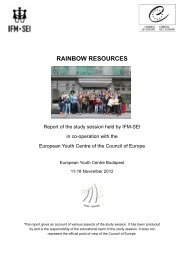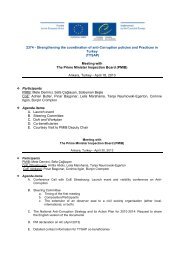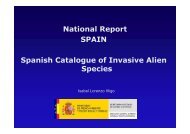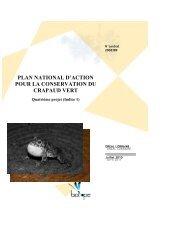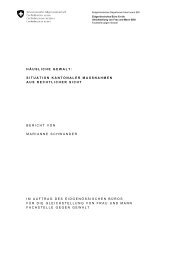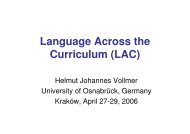Money laundering through money remittance ... - Council of Europe
Money laundering through money remittance ... - Council of Europe
Money laundering through money remittance ... - Council of Europe
Create successful ePaper yourself
Turn your PDF publications into a flip-book with our unique Google optimized e-Paper software.
<strong>Money</strong> Laundering <strong>through</strong> <strong>Money</strong> Remittance and Currency Exchange Providers - 2010 <br />
CHAPTER I –OVERVIEW OF MONEY REMITTANCE & CURRENCY EXCHANGE<br />
SECTORS<br />
1.1 General<br />
21. The globalisation <strong>of</strong> the financial sector and the vast development <strong>of</strong> information<br />
technologies has contributed to a considerable increase in the volume <strong>of</strong> the activity carried out by the<br />
MR/CE sectors during the past two decades. In the US for example, the estimated value <strong>of</strong> financial<br />
services provided by the <strong>money</strong> service business industry, which includes MR/CE activity, 9 was<br />
approximately USD 200 billion annually in 1997; however, by 2005 the industry had grown to<br />
approximately USD 284 to USD 305 billion (FinCEN 2005). Unfortunately there are no similar<br />
figures available for the equivalent sector in other parts <strong>of</strong> the world; therefore it is impossible to<br />
estimate the size <strong>of</strong> the MR/CE industry globally.<br />
1.2 The <strong>money</strong> <strong>remittance</strong> sector in MONEYVAL/FATF member States<br />
22. The World Bank estimate <strong>of</strong> <strong>money</strong> <strong>remittance</strong> (MR) worldwide is 443.5 billion USD for<br />
2008 and 420.1 (estimated) for 2009. Not all countries are able to determine the total volume <strong>of</strong><br />
incoming and outgoing MR activity. It is therefore difficult to provide an indication <strong>of</strong> the proportion<br />
<strong>of</strong> global MR that MONEYVAL/FATF countries represent. Nevertheless certain jurisdictions are able<br />
to provide reliable estimates <strong>of</strong> the volume <strong>of</strong> MR activity, and these are included in Table 1 below.<br />
From this information, countries can be divided into two groups:<br />
Senders, i.e,. countries where the amount <strong>of</strong> outgoing <strong>money</strong> transfers are remarkably<br />
higher than incoming.<br />
Receivers, i.e., countries where the amount <strong>of</strong> incoming <strong>money</strong> transfers are remarkably<br />
higher than outgoing.<br />
23. At <strong>Europe</strong>an level, the first group mostly includes primarily the “old” EU member states<br />
(Germany, Greece, Italy, and Spain), along with Croatia, Cyprus, Malta, and Monaco; while in the<br />
second group southeastern <strong>Europe</strong>an countries and former Soviet republics (Armenia, Bulgaria,<br />
Georgia, “the former Yugoslav Republic <strong>of</strong> Macedonia” and Ukraine) predominate.<br />
Country<br />
Table 1. Volume <strong>of</strong> <strong>money</strong> <strong>remittance</strong>s sent and received<br />
in selected MONEYVAL/FATF member States<br />
(2006-2008, million EUR)<br />
Sent Received<br />
2006 2007 2008 2006 2007 2008<br />
Armenia 615.6 787.7 722.0 971.0 1 353.7 1 433.5<br />
Bulgaria NA 11.1 8.6 NA 94.7 73.5<br />
Cyprus 190.5 212.1 227.3 17.0 37.1 29.8<br />
9 See paragraph 10 above for an explanation <strong>of</strong> the difference between MSBs and MR/CE service providers<br />
as the terms are used in this report.<br />
© 2011 MONEYVAL and FATF/OECD - 11



